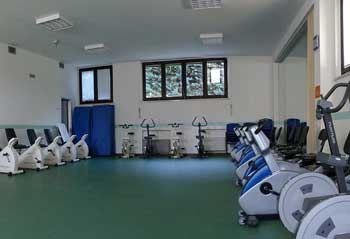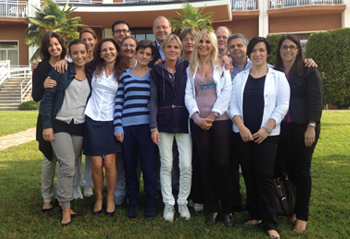Cardiovascular Rehabilitation

The Cardiovascular Rehabilitation Unit is located on the first and second floors of Building A, and on the second floor of Building B. It includes three medication rooms (one on each floor) and three commons rooms with television. Patients can be monitored throughout the structure and surrounding park with telemetry monitoring systems. Doctor’s consulting rooms are located on the first floor of building A, in the vicinity of the outpatient clinic and ergonomic and erospirometry laboratories, Dynamic ECG Holter and echocardiography for both inpatients and outpatients (the Clinic is linked to the National Healthcare System (NHS) for this activity).
Department of Eating and Weight Disorders

Outpatient visits

Access to national health care services requires a doctor’s prescription. The payment of “tickets” (cost to be paid by the patient as a participatory contribution to the national health service) and outpatient services, can be paid in cash (up to the maximum amount allowed by law), by check, bank card, or credit card, at the cash office from 8.20 a.m. onwards (and from 7.30 a.m. for physiotherapy services provided in the early hours of the morning).
Dalle Grave, R., & Calugi, S. (2024)
Dalle Grave, R., Chimini, M., Cattaneo, G., Dalle Grave, A., Ferretti, L., Parolini, S., & Calugi, S. (2024).
Guglielmi, V., Dalle Grave, R., Leonetti, F., & Solini, A.






